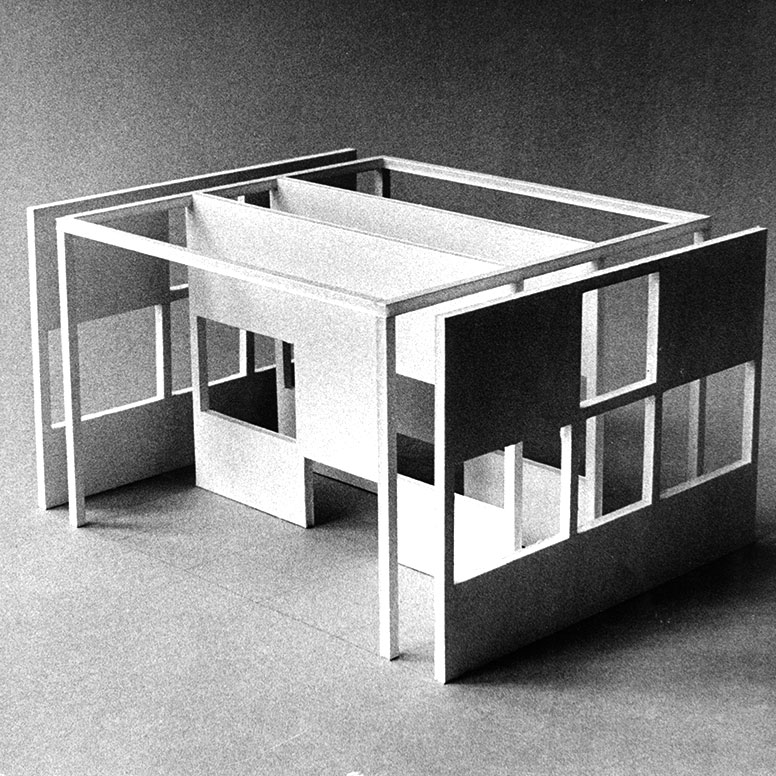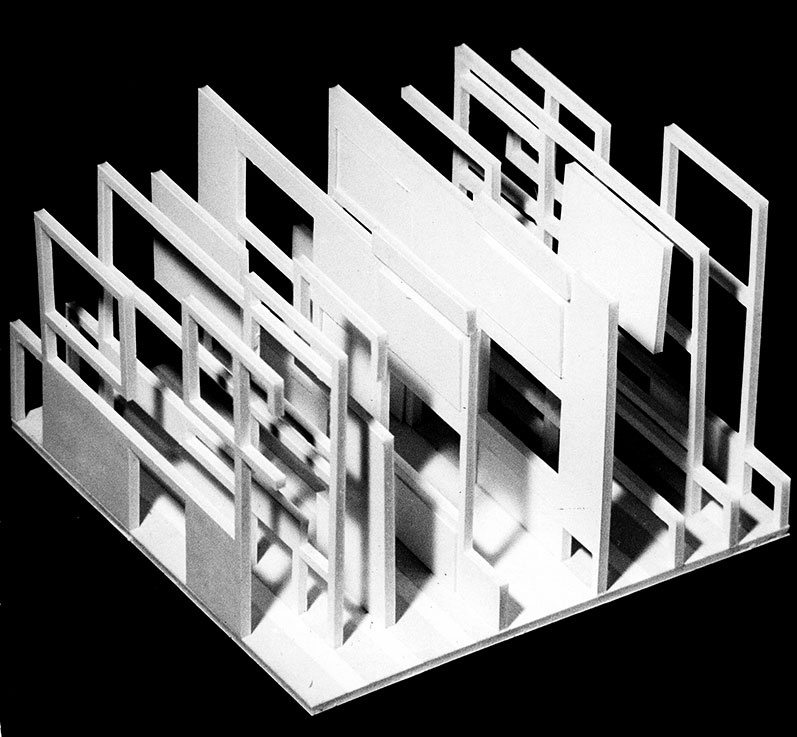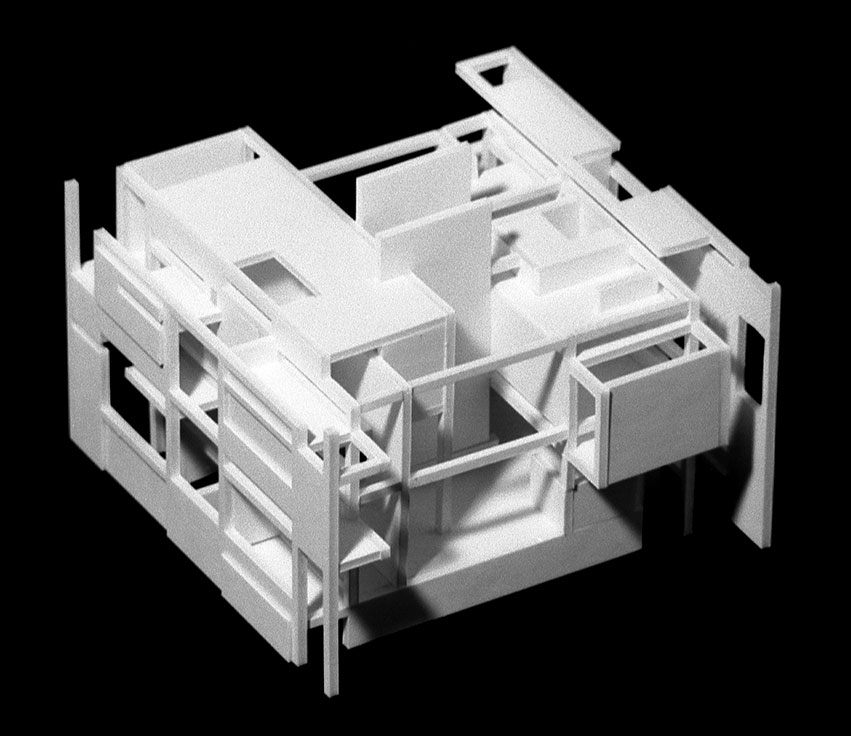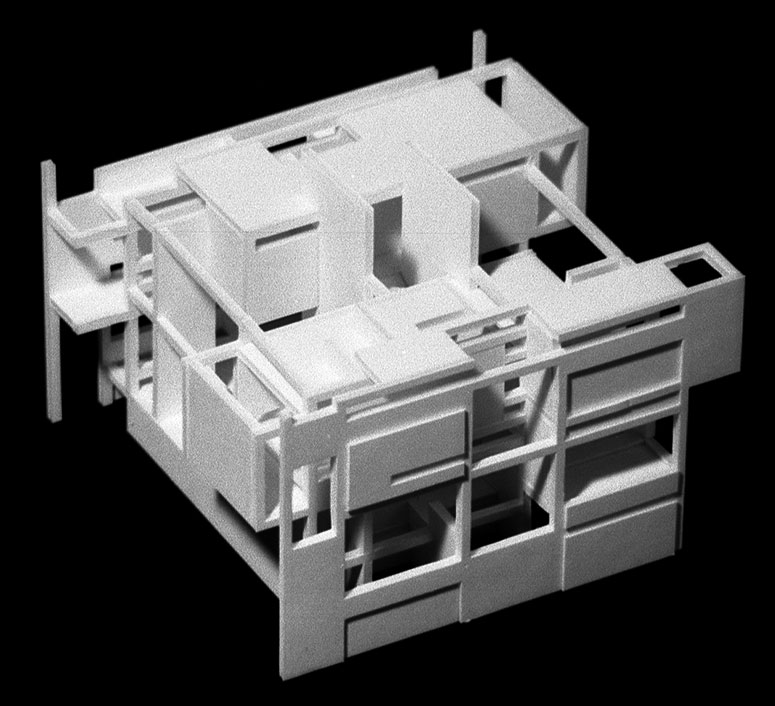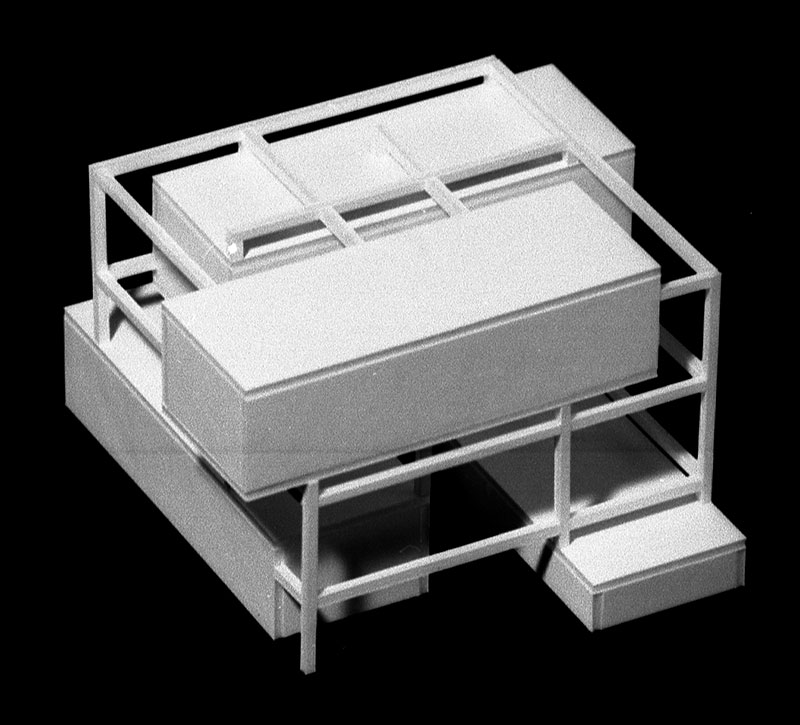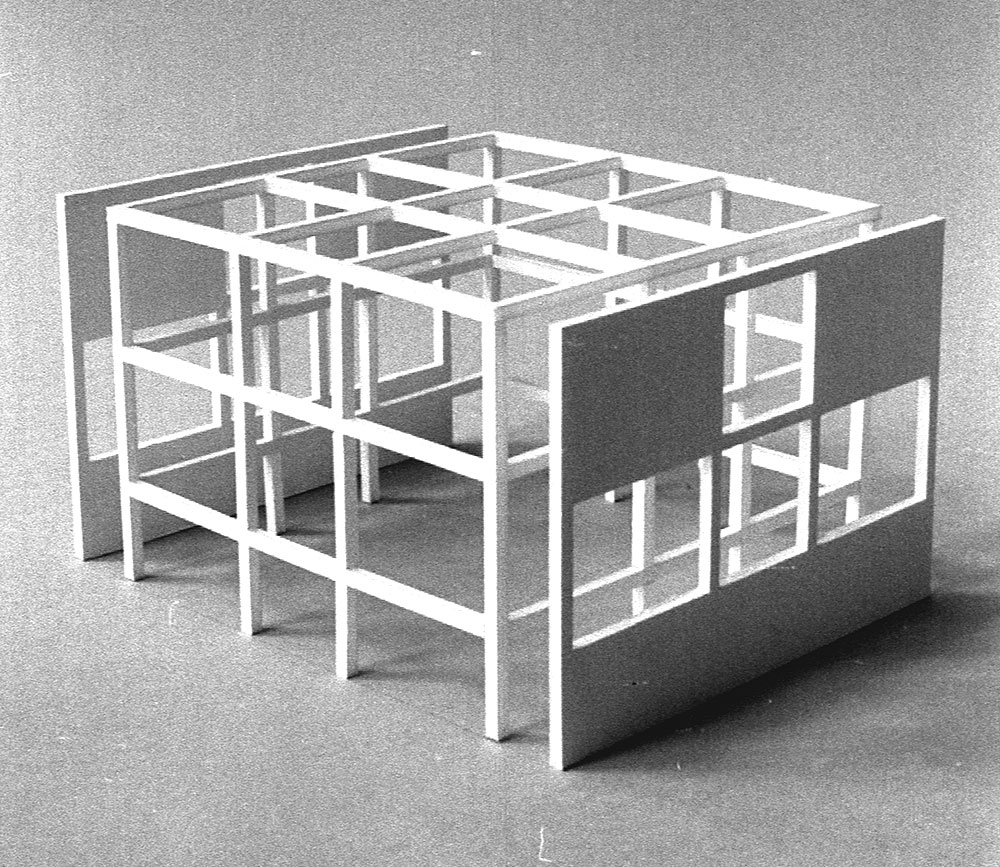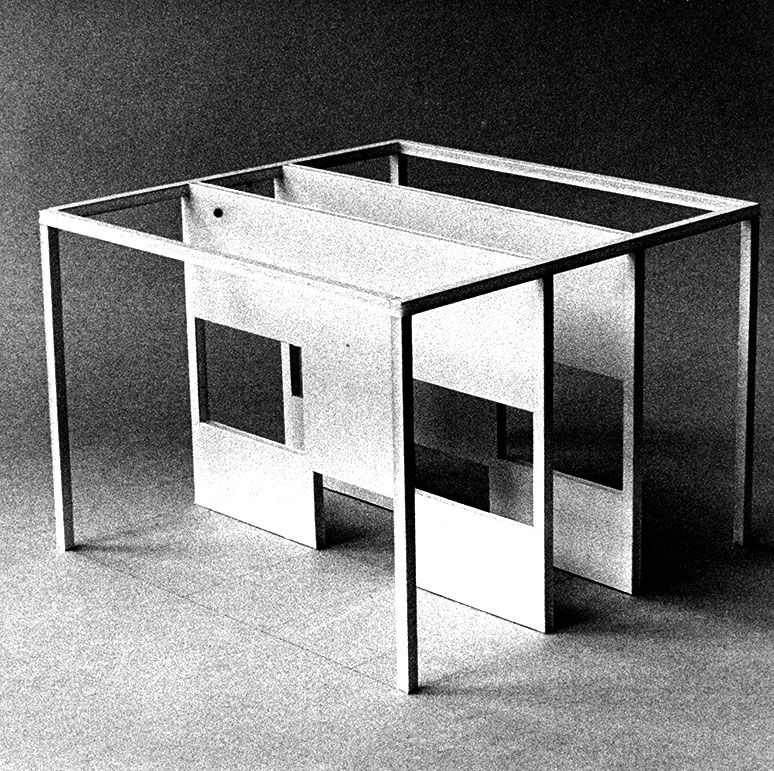
HOUSE IV
Location: Falls Village, Connecticut
Year: 1971
In
House IV, a limited set of rules (shift, rotation, compression, extension) was
applied to a limited set of elements (cubic volume, vertical planes, spatial
nine-square grid). This transformational method establishes a code of spatial
relationships within the syntactic domain of architectural language. The set of
diagrams thus produced is recorded as both substance and indexical sign, which
shift the focus away from existing conceptions of form in an intentional act of
overcoming materiality, function, and meaning.
The transformational methods employed in House IV were specifically constructed to be largely self-propelling and therefore as free as possible from externally determined motives. A “logical formula,” that is, a step-by-step procedural model, was established. Then basic elements such as line, plane, and volume were set into motion, resulting in an object that appeared to “design itself.” Whether the result would be architecture or would have architectural features such as plan or façade was not a consideration of the process or a criterion for evaluation. In this sense, the problem was not to design an object but to search for and establish a transformational program free from traditional authorial constraints.
In House IV in addition to the investigation of an autonomous process, the challenge to the hierarchical nature of configurational systems was extended to a certain dialectical relationship in architectural form, specifically the implicit hierarchy of the “favored partner” in dialectical pairs. Thus, if frontality/obliqueness is taken to be one such dialectic, with frontality the preferred point of view of modernism, in House IV the oblique view was equalized in importance with the frontal. Similarly, the simultaneously perceived was equalized with the sequentially perceived.
The transformational methods employed in House IV were specifically constructed to be largely self-propelling and therefore as free as possible from externally determined motives. A “logical formula,” that is, a step-by-step procedural model, was established. Then basic elements such as line, plane, and volume were set into motion, resulting in an object that appeared to “design itself.” Whether the result would be architecture or would have architectural features such as plan or façade was not a consideration of the process or a criterion for evaluation. In this sense, the problem was not to design an object but to search for and establish a transformational program free from traditional authorial constraints.
In House IV in addition to the investigation of an autonomous process, the challenge to the hierarchical nature of configurational systems was extended to a certain dialectical relationship in architectural form, specifically the implicit hierarchy of the “favored partner” in dialectical pairs. Thus, if frontality/obliqueness is taken to be one such dialectic, with frontality the preferred point of view of modernism, in House IV the oblique view was equalized in importance with the frontal. Similarly, the simultaneously perceived was equalized with the sequentially perceived.
Concept

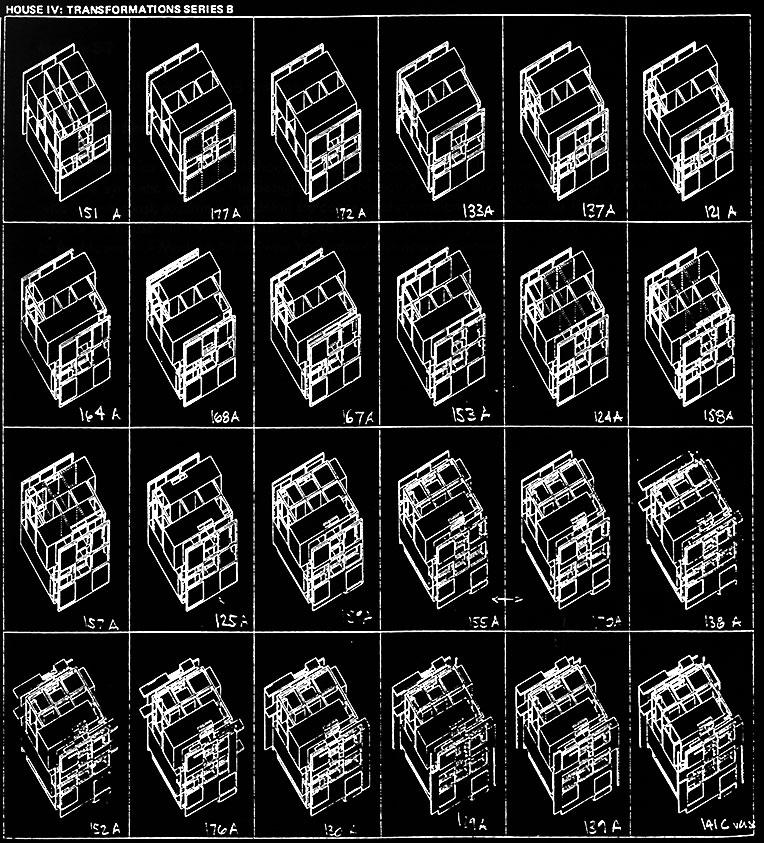
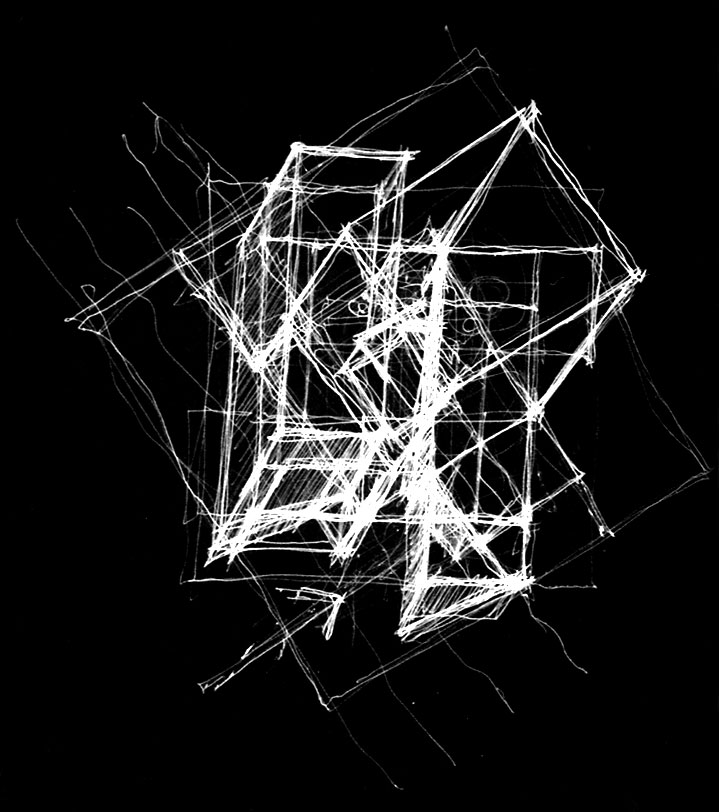

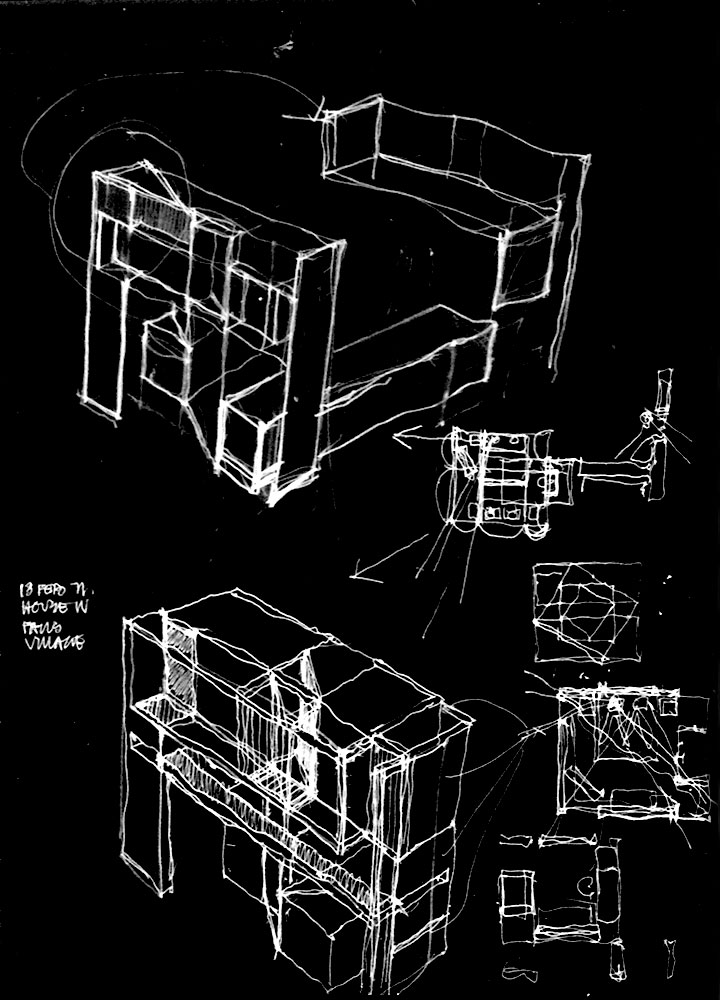



Drawings
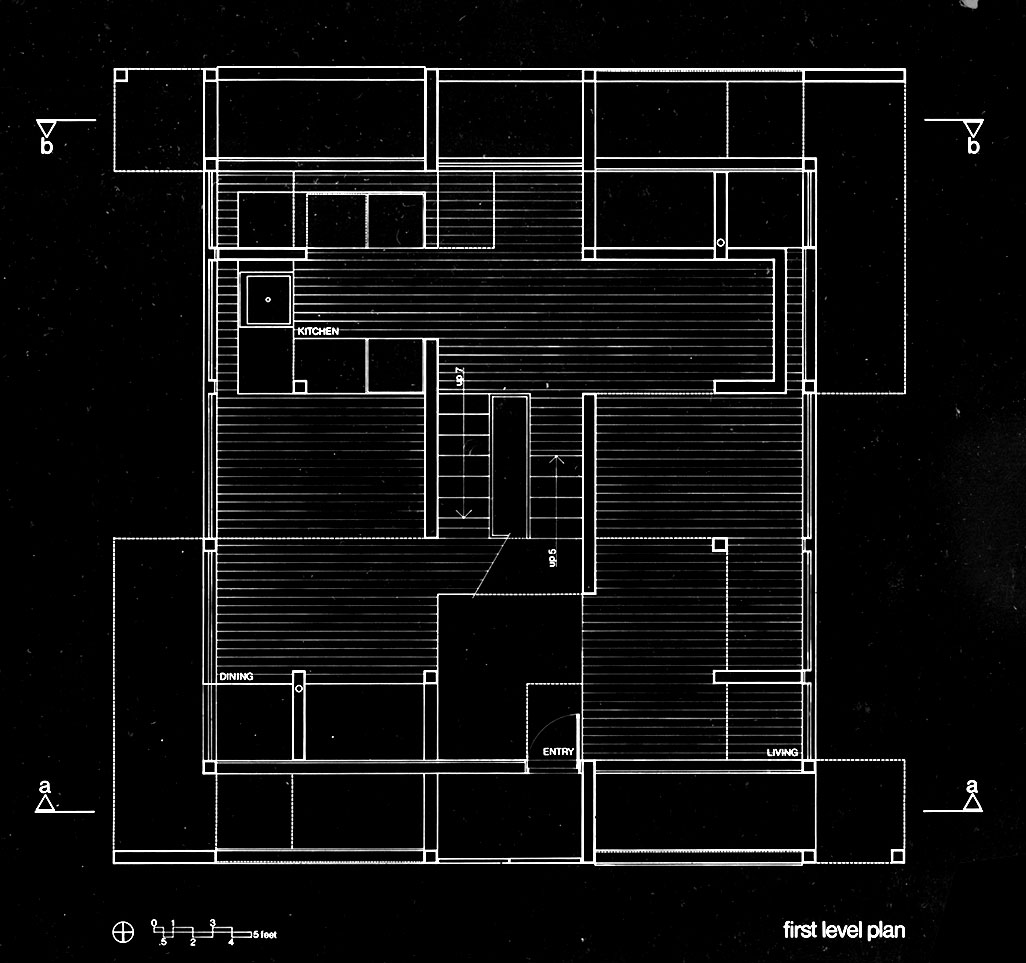
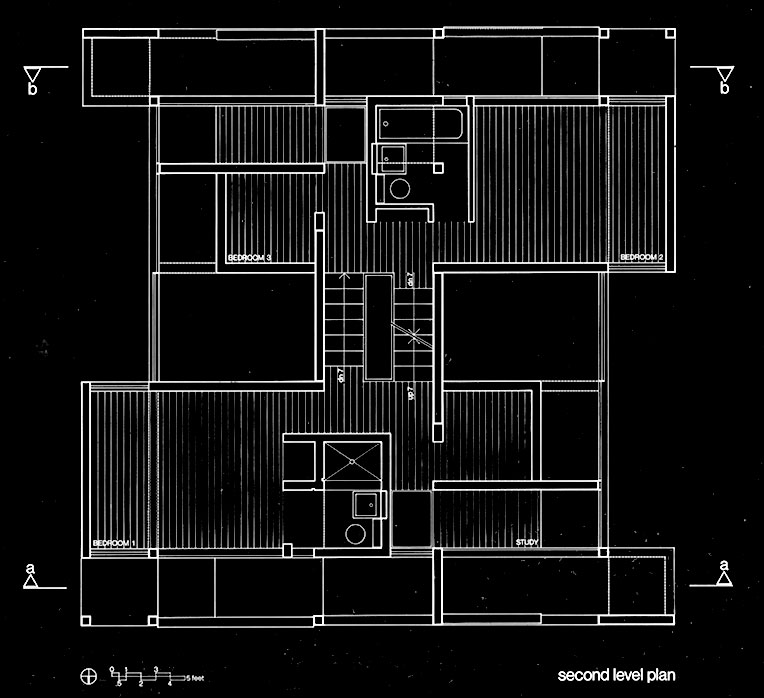
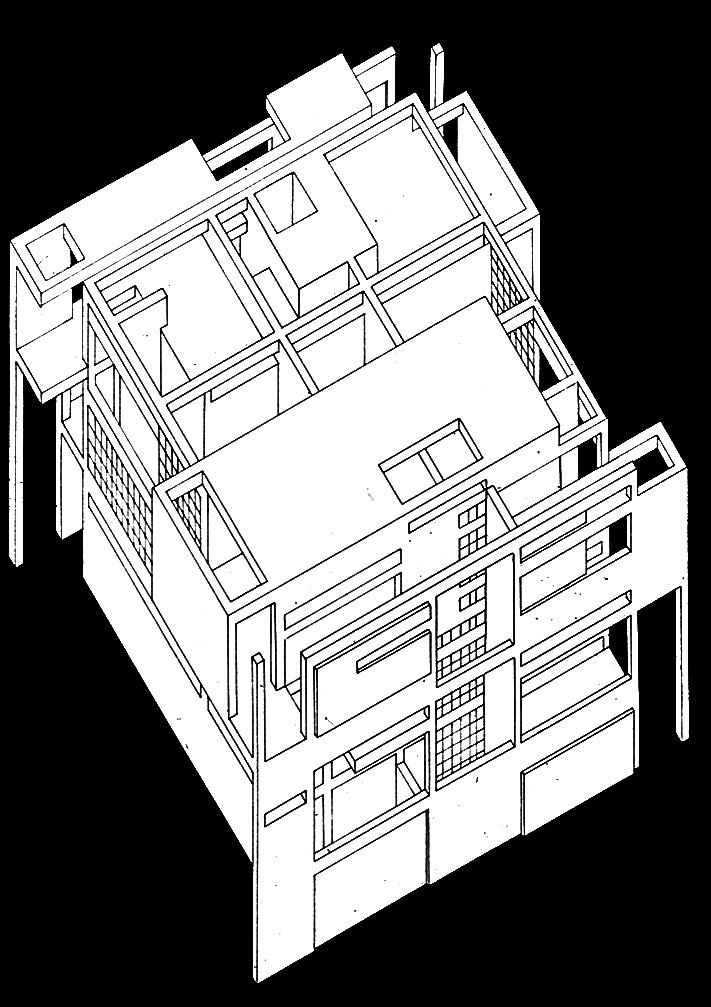

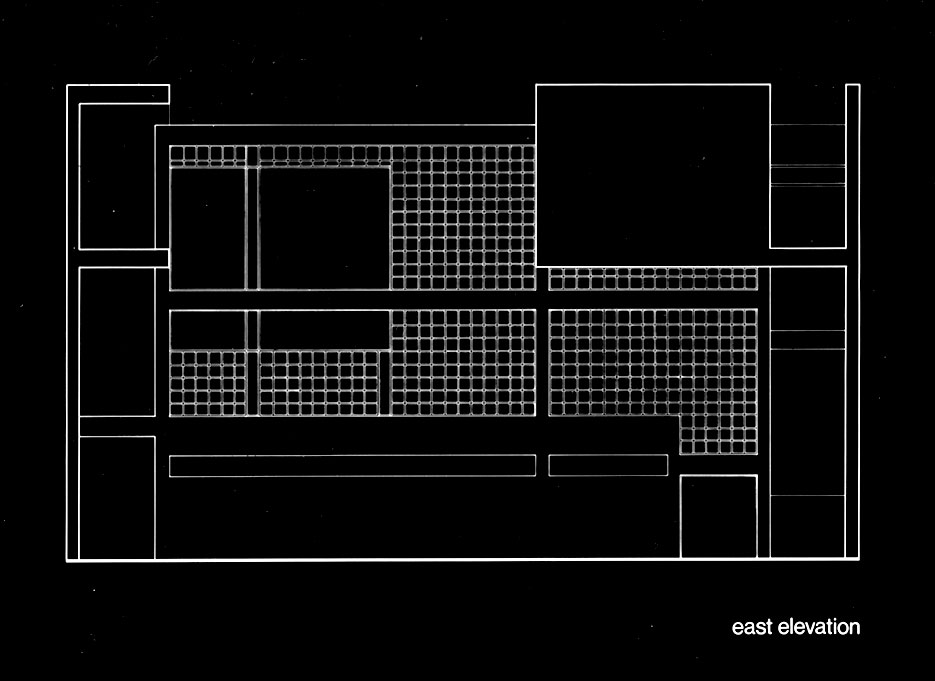
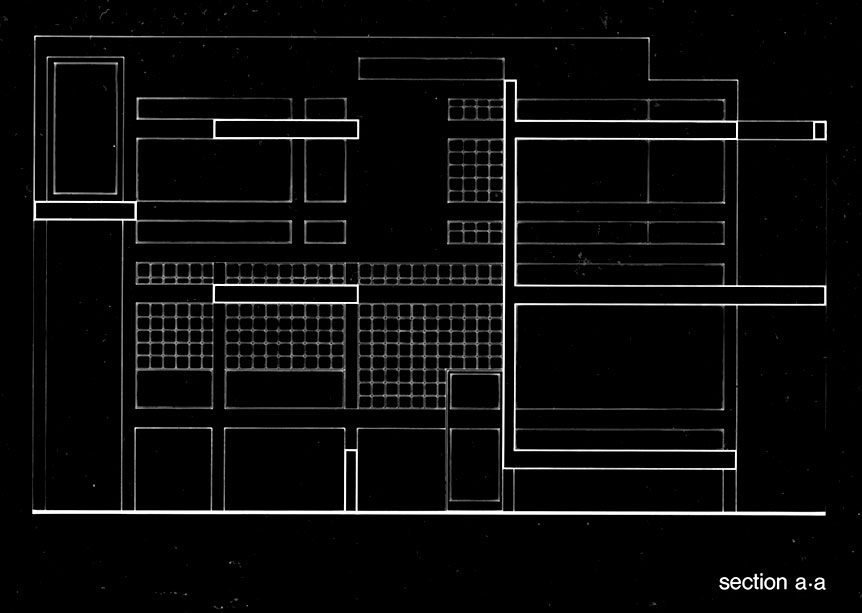

Model photos
